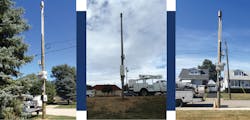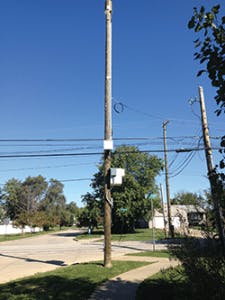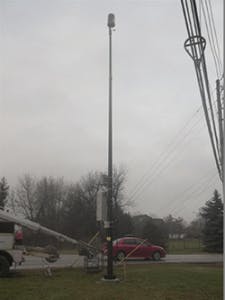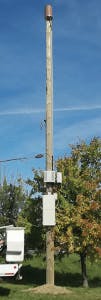Macro and Small Cells Bring It
3 Factors to Success in 2016
Global mobile data traffic is on the rise, with expected monthly traffic to surpass 24.3 exabytes by 2019.1 What’s driving the growth is the ongoing global adoption of smartphones and the high bandwidth applications enabled by these devices. Wireless carriers are challenged to support this growth and to ensure high quality experiences for their end-users. Let’s take a closer look at some of the solutions carriers are employing, such as small cells, fiber-based backhaul and Cloud-Radio Access Networks (C-RAN), and how network providers are supporting these solutions to allow wireless carriers to provide more capacity to meet this surging demand.
To speed deployment, some wireless carriers are looking for turnkey solutions where network vendor partners are supplying not only the typical backhaul services, but also offering other ancillary services such as site acquisition, installation, power, and even on-site maintenance services.
Small cells are becoming an integral part of wireless networks and are used to complement coverage from larger macro-cell towers, providing incremental capacity to a small geographic area. However, there are a number of challenges that must be overcome to ramp up deployment. At purpose-built macro cell towers, wireless operators can secure space and power fairly readily from the tower operator and backhaul solutions from network providers at or near the site. In contrast, small cells are often installed on utility or light poles, sides of buildings and other non-traditional locations, that are not typically set up to accommodate, power or provide backhaul connections for radio equipment. To speed deployment, some wireless carriers are looking for turnkey solutions where network vendor partners are supplying not only the typical backhaul services, but also offering other ancillary services such as site acquisition, installation, power and even on-site maintenance services.
In addition, we are now seeing that at both macro cell towers and small cells, wireless operators are specifically requesting fiber-based backhaul solutions instead of copper and microwave-based solutions to ensure that backhaul bandwidth can be rapidly scaled up as demand grows. Switched Ethernet backhaul delivered over fiber networks is a popular choice for wireless carriers for precisely this reason. But some wireless operators, seeing that wireless demand growth shows no sign of slowing, are partnering with network partners of dark fiber backhaul solutions and are taking on the responsibility of procuring, managing and upgrading the bandwidth capabilities of the backhaul electronics as capacity needs grow.
A new technology that is generating a lot of interest amongst wireless operators is C-RAN. C-RAN uses centralization, virtualization and pooling of base station baseband processing to drive efficiencies. A typical cell site currently must accommodate antennae and a base station. With C-RAN technology, antennae are deployed at macro and small cell sites, as they are today, to provide coverage to a particular area, but base stations are removed and aggregated into a centralized location. The centralized base stations are provisioned in software on virtual machines, on commercial servers, typically housed in carrier-grade data centers. Further, the computing power required for the centralized base stations is not dedicated to specific cell sites, but instead can be pooled to provide baseband processing power to the sites that most need it at any given time. Back at the cell site, removal of the base station means simpler site acquisition and reduced space and power costs. Due to stringent requirements on bandwidth, delay and synchronization, fiber-based fronthaul connectivity is required to connect antennae and base stations. Wireless operators and network providers are starting to work together to design these fronthaul networks to help realize the immense benefits of C-RAN networks.
3 Keys to Success
Whether planning to deploy or augment macro cells, small cells or C-RAN, wireless operators and their partners must consider a few key success factors to ensure that the networks they build meet and/or exceed the demands of their customers:
1. Reliability. In today’s always connected world, cell phone outages and spotty service are not tolerated like they were in the past. Redundant network elements, ringed architectures and rock solid network support are a must.
2. Experience and Flexibility. Wireless carriers are choosing experienced partners with a proven track record of being fast, flexible and delivering on the connectivity solutions designed.
3. Scalability. Wireless networks must be able to meet surging demand throughout their coverage area today and into the future. It is important for wireless operators to choose partners who can provide dense fiber-based solutions, across a wide geography.
With Lightower’s recent merger with Fibertech, the company now has over 30,000 fiber route miles throughout the Northeast, Mid-Atlantic, and Midwest, providing dense fiber connectivity to over 15,000 service locations, 250+ data centers, 100+ MSCs, and over 5,000 cell towers and small cells.
Endnote
1. Cisco Visual Networking Index: Global Mobile Data Traffic Forecast Update 2014-2019 White Paper: http://www.cisco.com/c/en/us/solutions/collateral/service-provider/visual-networking-index-vni/white_paper_c11-520862.html



